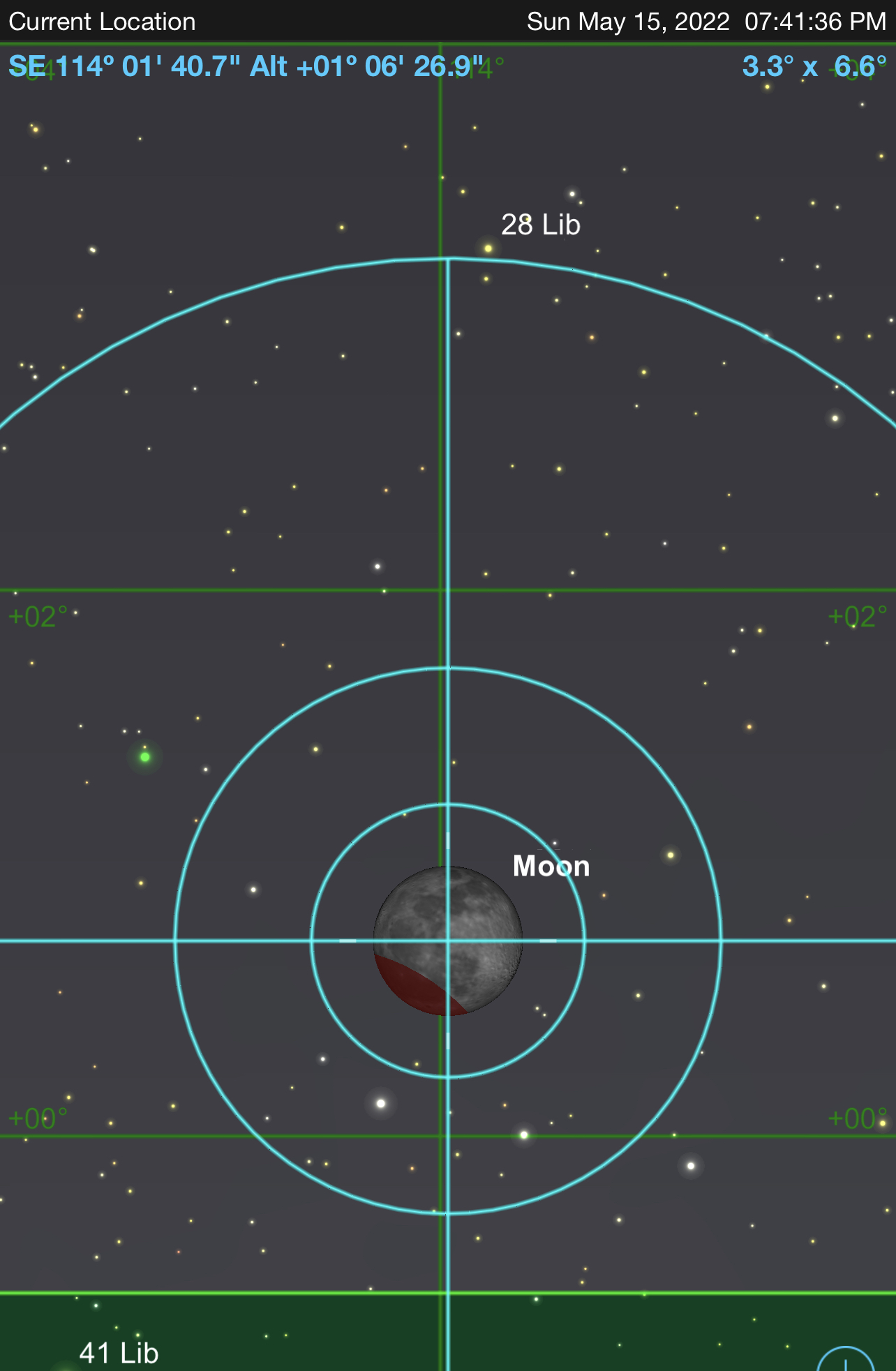Lunar Eclipse - Sunday May 15, 2022
This lunar eclipse will be a nice one if you live on the west coast.
Here's a detailed general overview: https://earthsky.org/astronomy-essentials/total-lunar-eclipse-may16-2022/
Here's some details for San Diego: https://www.timeanddate.com/eclipse/in/usa/san-diego
This guide's time and directions is based on San Diego; times will vary by time zone; direction will vary by your lattitude.
|
Over San Diego, the moon will rise at 7:33p already partially in the Earth's shadow. You don't need a scope or binoculars, just a site with a view to the southeast. It will rise at an Compass Heading of 114-degrees. Pick out a site ahead of time with a clear view to the East Southeast (24 degrees south of east (about where the sun will rise that morning). (Troop 4: Mt. Soledad; Kate Session's Park? Crown Point. The Yacht Club!).
There are two big changes to the moon during a lunar eclipse: color and "phase". Color: most full moons are stark white once they clear the horizon. Our atmosphere scatters light, so some sunlight will always get to the moon. The reddish hues we seen near sunrise and sunset are the hues that get to the moon even when it's fully in shadow. Dark and red. Phase: as the moon enters the full shadow of the earth (the umbra), it appears to go from full to half to crescent to new to crescent to half to full. It does so over a period of 90 minutes rather than 28 days. Maximum eclispse is 9:17p PST. |
 |
Note that you don't need telescopes or binoculars to see the color change or the "phase" progression. Photos - even with your phone - will capture the changes.
(secret observer hint: full moons are the least interesting time to look at the moon. The terminator - the very sharp day/night line - is the most interesting part of the moon to observe. You can see it move over the course of an hour or so: tips of mountains rise into or sink out of sunlight, valleys grow or receded as the sun rises or sets on them. Early astronomers were able to estimate the heights of the mountains with a little shadow trigonometry. Full moons don't have terminators: no cool shadows!)